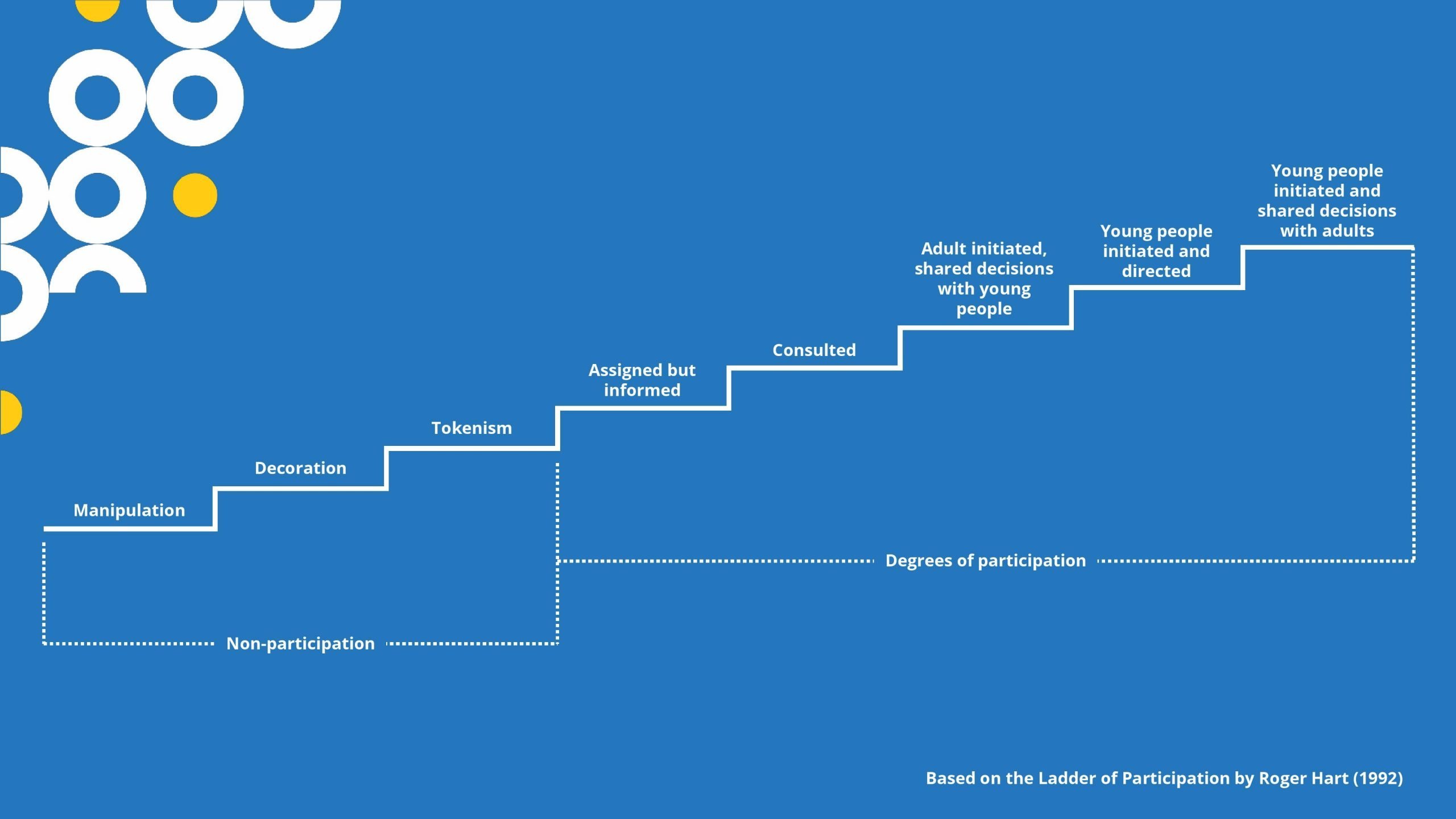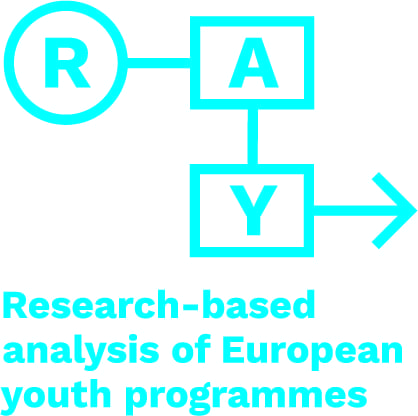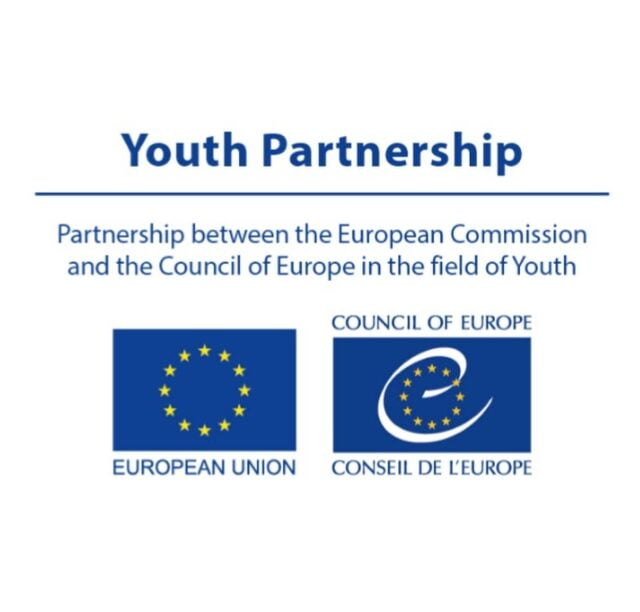Youth Participation
Year of production: 2021
Who is the Youth Participation topic for?
This resource category is for anyone who believes young people should have a voice in decisions that affect their future. Whether you are a youth worker, parent or a decision-maker, this section of the Resource Pool will help get the most accurate and up-to-date information about youth participation.
Youth participation as a process
In order for a process or structure, such as a Youth Council, or a youth related activity to be regarded as a genuine example of youth participation, it needs to fulfill three conditions:
Young people need to take part in it
Be genuinely empowered to express their views and opinions about the questions being discussed
Be given a real opportunity to have influence and some say over the outcome
Main definitions of Youth Participation
While numerous other definitions of youth participation exist, there are three important characteristics that further help to understand what youth participation is:
Participation is a process
Rather than a one-off event, participation is about the sustained engagement of young people in the decision-making process.
Participation happens at multiple levels
Young people’s participation in decision-making happens in multiple spheres and at multiple levels, most frequently at the individual and local level (such as interpersonal, family, and schooling) but includes the regional, national and international arenas.
Partcipation is about power
Participation in decision-making is about the sharing and distribution of power – from and between those that typically control the process (adults) to those they seek to engage (young people).
Participation goes beyond the political processes – though that is often the prime focus – and can include decision-making in healthcare, the workplace, education, and within social and economic life.
From left: copyright: Austrian National Youth Council
Youth Participation ABC
Where does youth participation happen?
Youth participation, as a process, can happen anywhere and everywhere. For example, it can happen at home when parents give their children the right to jointly or independently decide about certain questions that concern their everyday life. It can happen in kindergartens and schools, where children and young people are given choices and freedom to decide what they want to learn or who they want to represent them in various youth organizations.
But youth participation can also happen in a more formal setting: when young people are given the right to vote, by lowering the voting age, or when they decide to represent other young people through youth organizations or political activism.
It can also happen on an individual level. For example, when a young person decides to take part in an online consultation about the local public transport changes or change their consumer behaviour to reduce their carbon footprint.
Nowadays, more and more participation happens online, using social media to express one’s views as well as purpose-built apps and web platforms specifically developed to run consultations. It is important to know, that whereas most of the structures and process for youth participation are connected to the public sector and governments, youth participation can also happen in the private sector, such as in business, sports, healthcare and other fields.
Why do we even need youth participation?
There are many reasons why youth participation is an important concept for young people, adults and the society alike. The main reasons are:
- Human Rights: to recognise young people’s human rights, possessing participation rights as citizens and taking into account the existence of international treaties such as the United Nations Convention on the Rights of the Child.
- Empowerment: participation, as a process that requires power sharing, can shift the balance of power between the generations and redress young people’s marginalisation.
- Efficiency: youth participation is viewed as desirable and a source of knowledge for practitioners and policy makers, and which emphasises the view of young people as citizen-consumers.
- Development: participation can encourage positive youth development, such as young people learning new social skills.
What is good and what is bad youth participation?
Youth participation is about adults sharing some of their power with young people. That means, that adults such as parents, youth workers and teachers, but also civil servants and politicians have an important role in determining the quality of a particular youth participation process or initiative.
Over the years, a number of frameworks and models have been created to support organisations, adults and young people to conceptualise youth participation. The most influential and well-known model and framework for Youth Participation is Roger Hart’s Ladder of Youth Participation.
Roger Hart´s Ladder of Youth Participation

Roger Hart’s Ladder of Youth Participation offers an eight-level model for children and young people’s participation. It uses the analogy of a ladder to describe different rungs or levels of youth participation.
The bottom three non-participation rungs are something that should always be avoided in a youth participation process – these are examples of disingenuous and tokenistic practices. In other words – these are examples of letting young people down.
It is not always practical to start the participation process from the very top of the ladder either. As young people are often not expected to make decisions on their own, it might be beneficial in some circumstances to gradually move up the ladder and increase the level of responsibility given to young people step-by-step. In some other cases, young people are ready and willing to take on more responsibilities in which case it is appropriate to aim at the very top of the ladder.
Hart’s ladder can be a useful tool for adults such as youth workers, facilitators, civil servants and decision-makers to guide the planning and evaluation of a youth participation and engagement process. It is primarily a tool for adults to understand what to avoid and what to improve. The best way of understanding the Ladder is when it is used together with definitions and examples of each rung.








